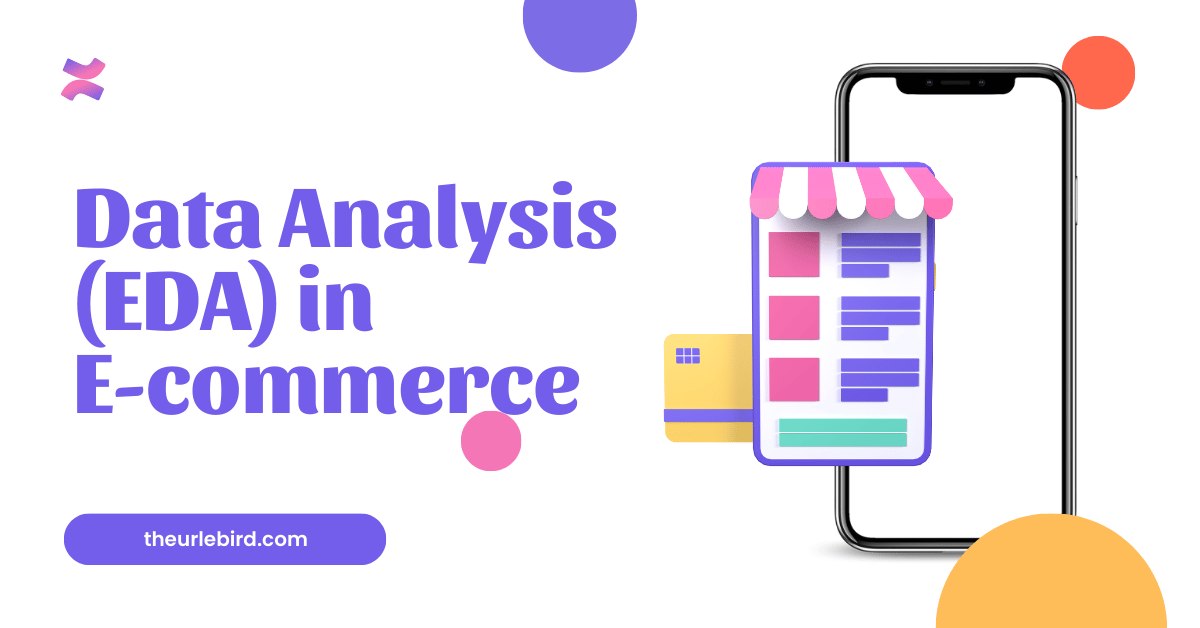Introduction
In the fast-paced world of e-commerce, data-driven decision-making is essential for staying competitive. Two crucial techniques that help businesses extract valuable insights from data are Exploratory Data Analysis (EDA) and Regression Analysis. These methods allow e-commerce companies to understand customer behavior, optimize marketing strategies, and predict future sales. In this article, we explore the significance of EDA and regression analysis in e-commerce, their applications, and how businesses can leverage these techniques to drive growth.
Understanding Exploratory Data Analysis (EDA)
What is EDA?
Exploratory Data Analysis (EDA) is a process of examining datasets to uncover patterns, relationships, and anomalies using visualizations and statistical summaries. EDA helps businesses understand their data before applying advanced analytics.
Key Steps in EDA for E-commerce
- Data Cleaning: Handling missing values, removing duplicates, and correcting inconsistencies.
- Descriptive Statistics: Summarizing data using mean, median, standard deviation, and percentiles.
- Data Visualization: Using histograms, scatter plots, and heatmaps to identify patterns and correlations.
- Feature Engineering: Creating new features or modifying existing ones for better predictive modeling.
- Outlier Detection: Identifying unusual data points that could distort analysis results.
EDA Applications in E-commerce
- Customer Segmentation: Identifying different customer groups based on purchasing patterns.
- Sales Analysis: Understanding sales trends over time.
- Product Performance: Evaluating which products generate the most revenue.
- Customer Behavior Insights: Identifying common buying habits and seasonal trends.
Understanding Regression Analysis
What is Regression Analysis?
Regression analysis is a statistical method used to identify relationships between independent variables (predictors) and a dependent variable (outcome). It helps businesses predict future outcomes based on historical data.
Types of Regression Used in E-commerce
- Linear Regression: Analyzes the relationship between a single dependent variable and one or more independent variables (e.g., predicting sales based on advertising spend).
- Multiple Regression: Involves multiple independent variables to improve prediction accuracy (e.g., predicting revenue based on pricing, marketing spend, and customer demographics).
- Logistic Regression: Used for classification problems, such as predicting whether a customer will purchase a product (yes/no).
- Polynomial Regression: Used when the relationship between variables is non-linear.
Applications of Regression Analysis in E-commerce
- Sales Forecasting: Predicting future sales based on past trends and seasonal variations.
- Price Optimization: Understanding the impact of pricing changes on sales volume.
- Customer Lifetime Value (CLV) Prediction: Estimating the long-term value of customers based on their purchasing history.
- Marketing ROI Analysis: Measuring the effectiveness of marketing campaigns.
Implementing EDA and Regression Analysis in E-commerce
Step 1: Data Collection
Gathering relevant data from sources such as website analytics, customer transactions, and marketing campaigns.
Step 2: Performing EDA
- Visualizing customer purchase patterns.
- Identifying correlations between variables like discounts and purchase frequency.
- Detecting anomalies such as fraudulent transactions.
Step 3: Applying Regression Analysis
- Selecting appropriate regression models based on business goals.
- Training the model using historical data.
- Evaluating model accuracy using metrics like R-squared and Mean Squared Error (MSE).
Step 4: Making Data-Driven Decisions
- Adjusting marketing budgets based on predicted sales trends.
- Personalizing recommendations using predictive modeling.
- Optimizing inventory management to reduce stockouts and overstocking.
Conclusion
EDA and regression analysis are powerful tools that enable e-commerce businesses to make data-driven decisions. By analyzing patterns, predicting sales, and optimizing pricing strategies, companies can enhance customer experiences and maximize revenue. Implementing these techniques effectively can provide a competitive edge in the ever-evolving e-commerce landscape.




Excellent post! I would love the opportunity to learn as you enhance your website. Could you please share how I can subscribe to your blog? Your content has been incredibly insightful, and your explanations provide a clear and well-structured perspective.
Thank you for your kind words! I’m glad you found the content insightful. You can subscribe to our blog by info.contentmarketingteam@gmail.com. Let me know if you need any assistance!